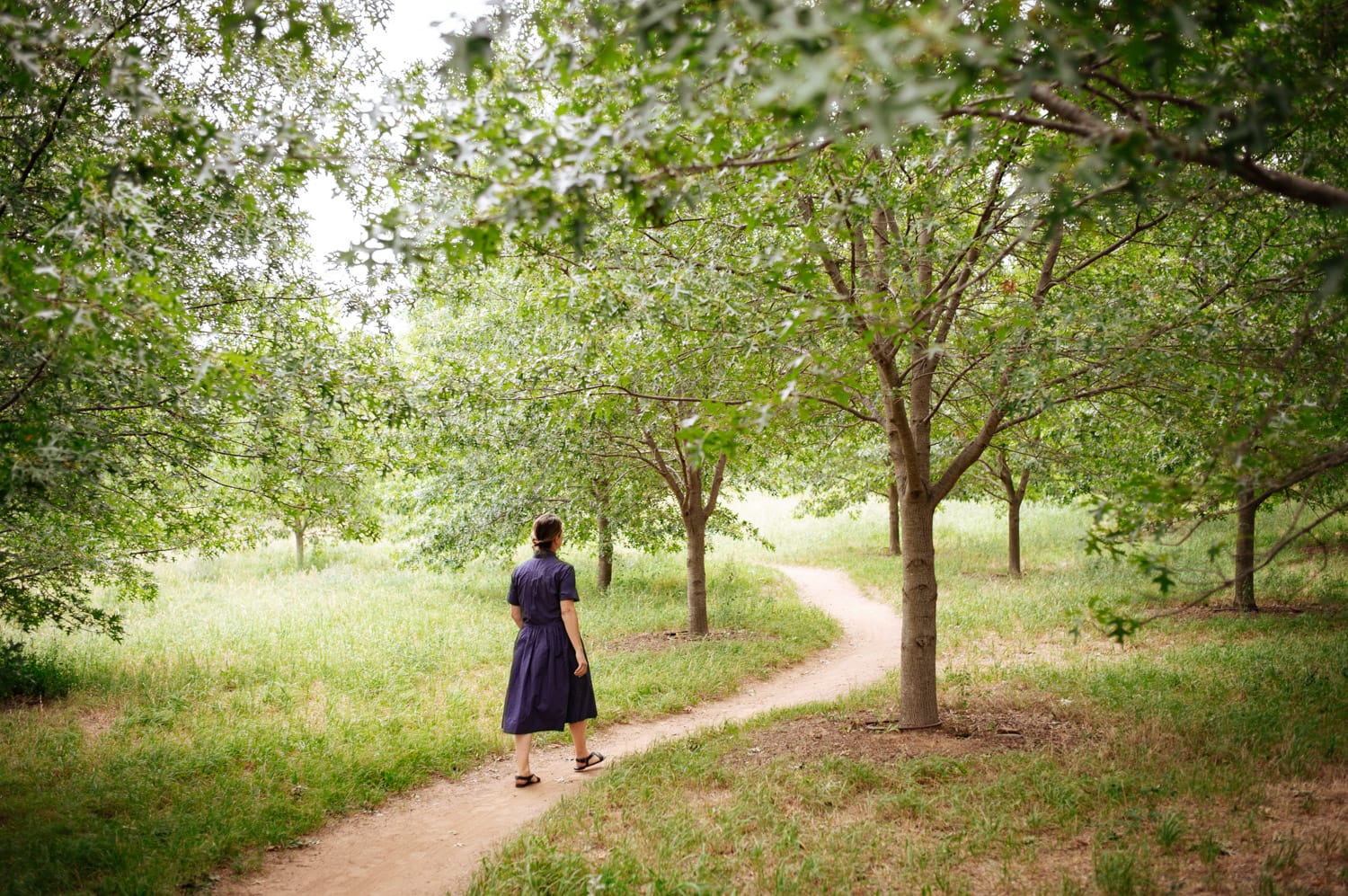
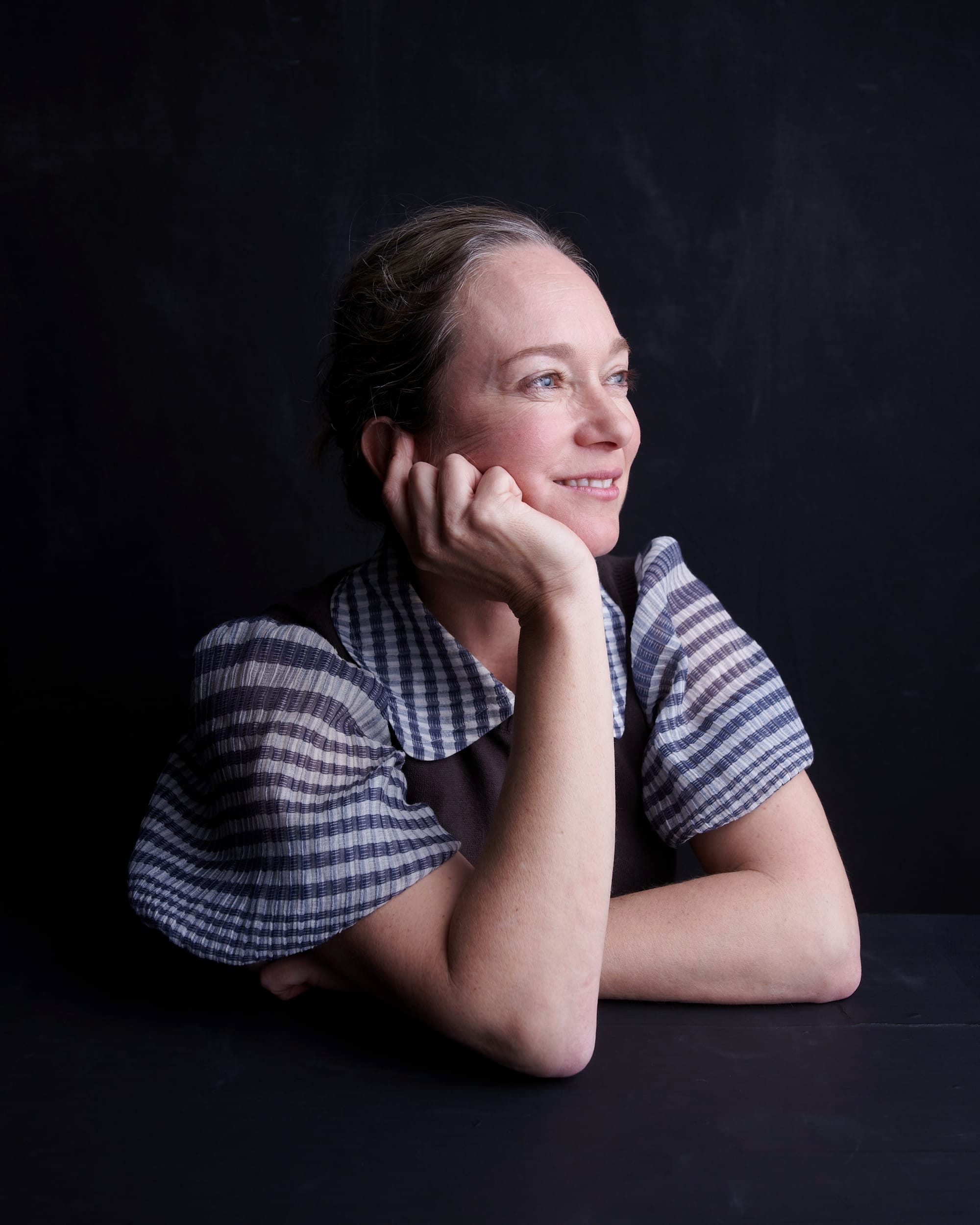
Not too big, not too small. Canberra has big monuments and small wine bars, important cultural attractions and neighbourhood cafes, and a vibe all its own. Here’s an alternative guide to the national capital.
I have two days for a holiday. Not enough time to go overseas or anywhere remote. But my home is remote, and what I want is a break from home.
I want good restaurants, galleries and a couple of great walks. I want a city that's not too big and not too small. Exciting but easy. Like that meme on Instagram about finding the perfect place to live: "I want to live in a small town but it also has to have a bookstore, a fancy coffee shop, at least three good restaurants, and an indie movie theatre all within walking distance." I want a holiday version of that. I'm booking a flight to Canberra.
Last year I came to Canberra as a volunteer on a Year 4 and 5 school camp. We drove 12 hours on a bus from Queensland to visit Questacon (still fabulous after all these years), Parliament House ("Look!" I said to one of the students when we saw it from the bus window. "What can you buy there?" she asked) and the Australian War Memorial. After a tour through the memorial's exhibition detailing the enormous loss of life in World War I and II, we came up for air near the water statue and ran into a group of real-life soldiers marching in formation. A Year 4 student gasped and whispered to her friend, "I thought all the soldiers had died?" Her friend replied, with a slow and serious nod, "some survived."
I loved seeing our capital through the children's eyes. But peering out of the bus window, as we were shuttled between monuments and museums, I kept catching glimpses of buzzy cafes and bakeries with queues.
There was an alternative Canberra experience going on – a parallel universe in plain sight – if only I could get off the school bus. On the first night of the school excursion, I had my chance. During dinner at the hostel, when the children started lining up at the bain-marie to pile nuggets on their plates, I snuck out on foot to find something more exciting to eat. After only a few minutes I walked past a simple blackboard with "Bar Rochford" chalked on it, along with a picture of a glass of wine and an arrow pointing up. Next to it was a flight of stairs. So up I went.

Here was a vibe. A very good vibe. Not a whiff of school-camp nuggets. Vinyl records were spinning, candles were flickering, cool twentysomethings were sipping, all in front of an enormous arched window overlooking London Circuit. After a warm welcome from the floor staff I, too, became one of those people with a glass of natural wine and a plate of anchovy toast with sauce gribiche (a delicious, cold egg sauce) in front of them. It was such a great experience that for the remaining two nights of the excursion I snuck out to Bar Rochford and ordered the exact same thing. And thus the seed was planted. If this randomly found venue was so good, what more might be waiting for me in this parallel Canberra universe?
Cabin, prepare the crew for landing. We're not on a school trip any more.
Everywhere in Canberra seems to be no more than 15 minutes away from where you are right now. Parking is a breeze. To prove my point, within 15 minutes of stepping off the plane I was queuing to order breakfast at Recess, a buzzing cafe in Griffith with excellent coffee, ricotta and avocado toast, and great music coming from a record player.
Recess Coffee 6B Barker St, Griffith
If I'd headed to the northern side of Lake Burley Griffin instead of the southern side to Recess, I could have pulled up at Intra, a concrete minimalist cafe with great coffee, properly brewed tea (not just a teabag dunked in hot water), an excellent jaffle menu, and art by local painter Luke Chiswell.
Intra 30/12 Provan St, Campbell
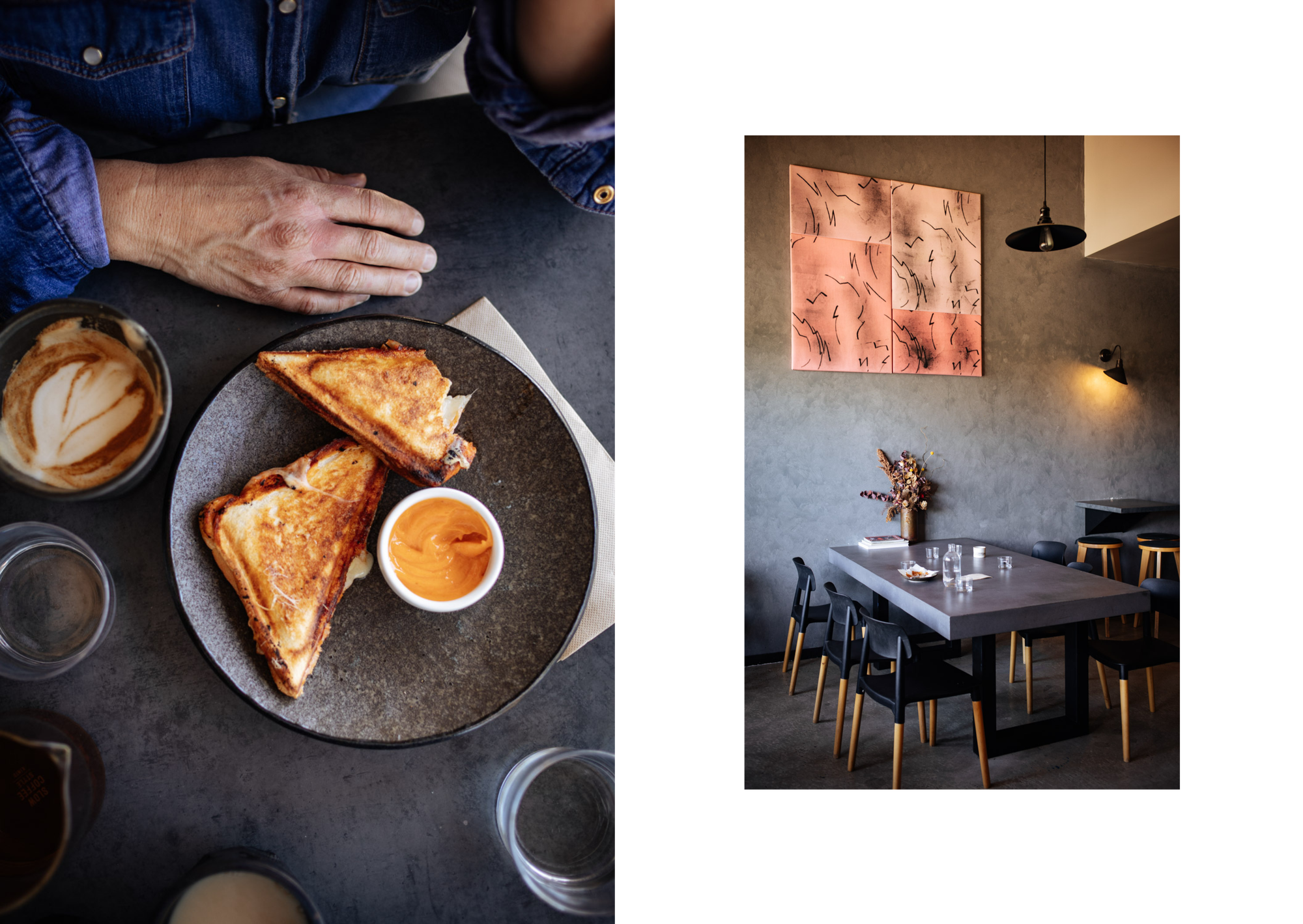
The cardamom buns, warm from the oven and made in the Swedish style, are unbelievably good here. I ate three of them in one day. Perhaps I should be ashamed to admit this, but I'm not.
Chef Lach Cutting taught himself to bake by watching YouTube videos, but you'd think he learned from a multi-year stage with a master artisanal baker. His focaccias, sourdough loaves and buns are excellent. This is the one venue that was more than 15 minutes away from where I already was (it was 20 minutes) – it's in the western suburb of Mawson where Cutting grew up – and it's worth the extra five minutes. Frankly, I would have driven 50 for one (or three) cardi Bs and a batch brew.
Under Bakery 1/30 Mawson Pl, Mawson

Come here for exceptional sandwiches made daily on Under Bakery bread (see above). The fillings, which go all the way to the edges, include combos such as rare roast beef, cafe de Paris, French fries and tart cos salad, or heirloom tomatoes, peach, basil, whipped ricotta and onion marmalade. No need to say more.
Sandoochie Shop 8, No Name Lane, Canberra
Twenty years ago, this industrial site was home to a few longspan sheds and carparks. Today, the sheds have been transformed into a super-cool village of creative businesses, hospitality and small-scale manufacturers such as Capital Brewing Co, which brews and cans craft beer on site, alongside a tasting bar and popular burger van.
Canteen by Ramen Daddy serves excellent bowls of ramen. The noodles are handmade, the broths are clear and tasty. The restaurant feels like a cubby house – albeit a sleek and elegant one – built inside a shed in the Dairy Road Precinct, between the industrial suburb of Fyshwick and the Jerrabomberra Wetlands. I stuck to the ramen, which was terrific, while dreaming of taking over a studio space in the shed.
Canteen Building 3.3, 1 Dairy Rd, Fyshwick

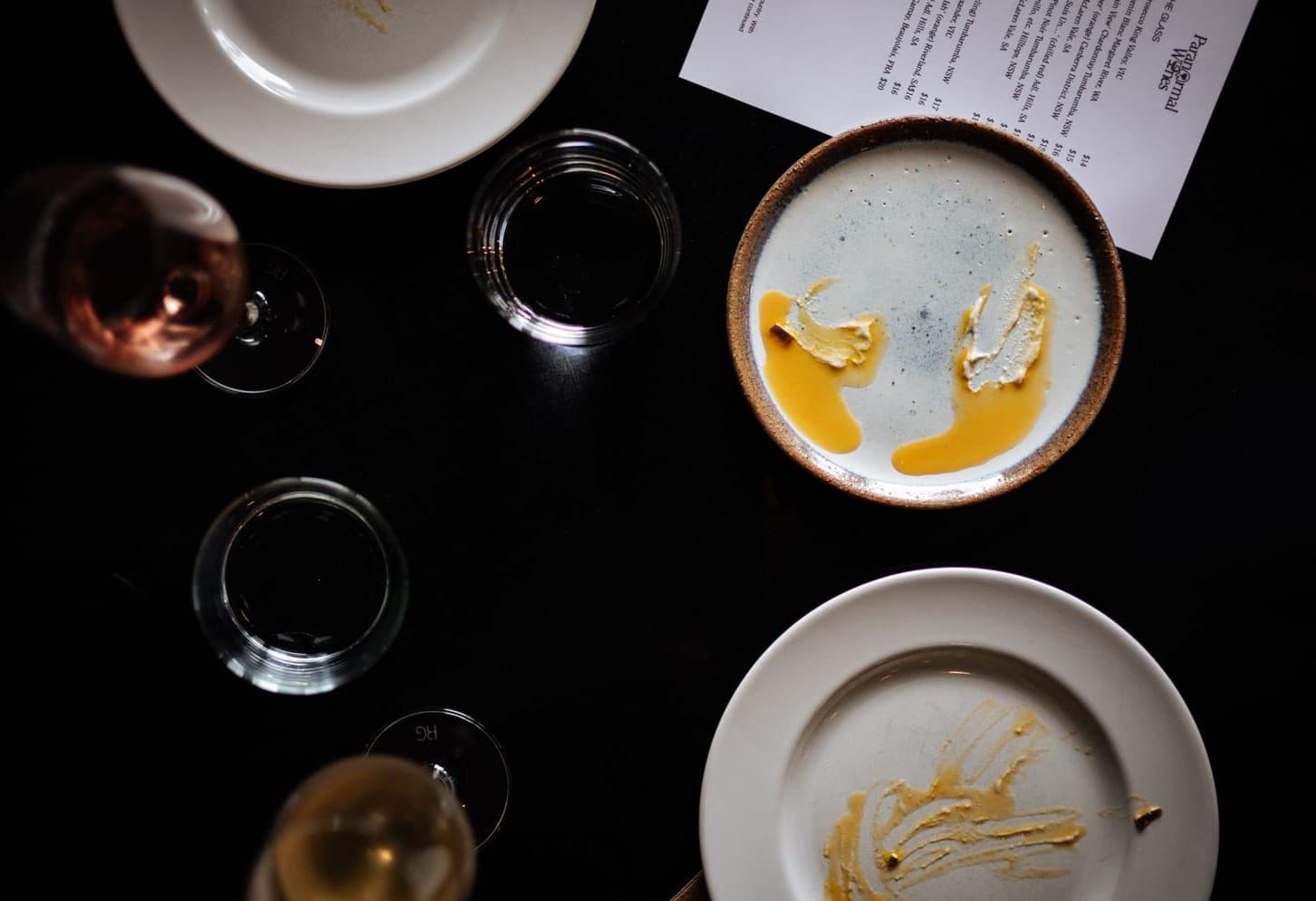
Hospitality big guns are setting their sights on Canberra. Celebrity chef Matt Moran has recently opened two restaurants in the capital: an Italian steakhouse called Compa and a sandwich deli &Sando next door. And this year Melbourne hospo group Lucas Restaurants opened a 120-seat Italian restaurant called Carlotta, with plans to open a French restaurant in the capital next year.
It's no wonder. Canberra's population is young. They have disposable income. The dining scene isn't as saturated as it is in Sydney or Melbourne, but it is vibrant. These new restaurants are a sign of Canberra's maturing hospitality world, and from what I can see it's the city's young local talent that is at its heart.
Here are three independent restaurants you won't find in any other city. They are small, personal and precious.
You know how I was raving about Bar Rochford? Well, chef Louis Couttoupes was back of house there when it burst onto the scene in 2016. It was his first proper kitchen job after a career as a Canberra public servant for almost 10 years.
In 2014, Couttoupes realised the public service wasn't for him, so he quit and went to Paris with his girlfriend. On an extended holiday, they fell into the bistronomy scene in Paris's 11th arrondissement, meeting chefs from all over the world who worshipped excellent fresh produce and daily changing menus. This was the world Couttoupes wanted to be part of.
He moved back to Canberra and got a job at Bar Rochford, working his way up from washing dishes to head chef. In 2022, Couttoupes opened his own restaurant, Onzieme ("the 11th" in French), in Canberra's inner south. With the help of his father and girlfriend, he spent six months renovating the corner space. His dad slept in the basement for three months. (This basement is now Onzieme's cosy wine bar; enter through a simple red door on Eyre Street).
Onzieme is a really great bistro. Simple food, elegantly executed, built on local, super fresh ingredients. The tomato consommé starter – a clear cold liquid – was incredible. Somehow more tomato-ey than a tomato.
Groups of four or more must choose the prix-fixe menu but, let me tell you, this is no burden. You are in very good hands with Couttoupes and his team. It was a joy to be led from the potato galette with smoked roe to a piece of Murray cod with gingery corn, to a smoked duck neck and then a tonka bean crème brûlée, without having to make any decisions myself. Followed by a nightcap in the basement bar, this was a wonderful way to spend an evening.
Onzieme 35 Kennedy St, Kingston
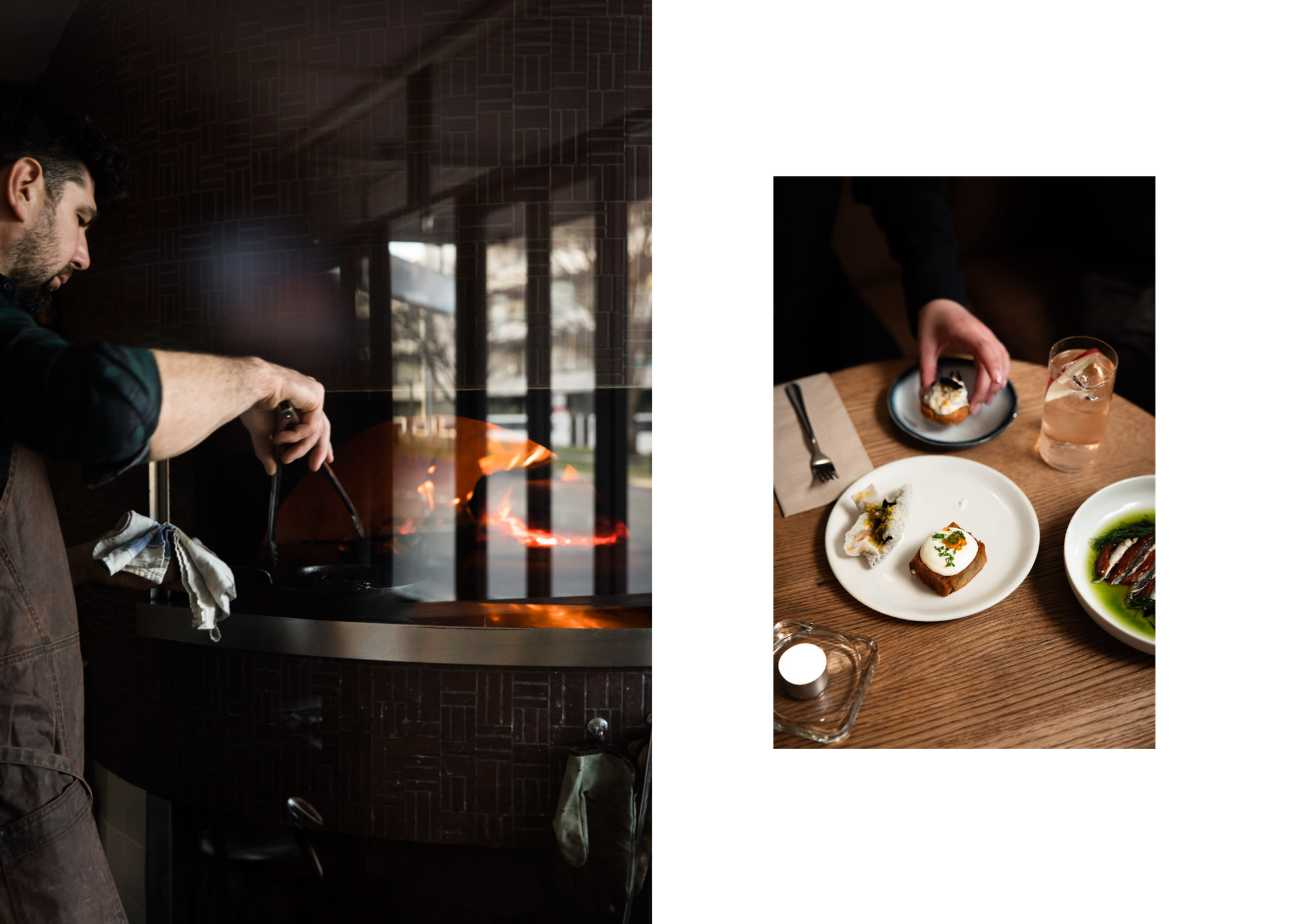
A cool small restaurant and bar overlooking a city plaza and the ACT Legislative Assembly. If I worked in one of the offices around here, I would suggest any meetings between 3pm and 5pm should be held at Such and Such to coincide with its $3.50 oysters and happy hour. This feels like some sort of secret that more people should know about.
There's also an excellent 25-page drinks list, with wine grouped into helpfully descriptive sections: "Minerality. Salinity. Alpine air, sea-spray. Stoney soils, salty air." From the kitchen came very good sourdough crumpety discs, tuna tartare with double crunch chips and a charming waiter called Blue.
Such and Such Constitution Place, 220 London Circuit

This is no ordinary bottle shop. It's a bottle shop that is also a bar that also serves seriously good snacks. Paranormal sits in a strip of shops in Campbell (next to Intra, see above) and stocks a small and considered range of wines, beers and non-alcoholic drinks that you can take home or drink on site.
Owner Max Walker has an incredible knowledge of the drinks he stocks and, depending on your mood, can point you towards a local low-intervention wine made by Canberra winemaker Sam Leyshon under his Mallaluka label, a zero-alcohol alkalised wine or a mineral-driven natural white by Merimbula winemakers Aristotelis Ke Anthoula.
And then there's the snack menu. Very good things on toast. Sommerlad chicken legs with their claws still on. Tiny confit mackerel tarts.
Paranormal Wines G27/6 Provan St, Campbell

There's a great book called Canberra written by journalist Paul Daley, who had not been excited to move to the capital but fell in love with it when he did. "To live here is to coexist with the national treasures and monuments," wrote Daley. "And now the National Arboretum – a dream of [Walter Burley] Griffin's whereby endangered plants and trees are being cultivated for conservation, science and preservation – is growing on a rise above the lake ...
"Canberra is full of monuments to its past and present. The arboretum symbolises optimism in its future."
So off to the future I went. It was 15 minutes away and parking was a breeze.

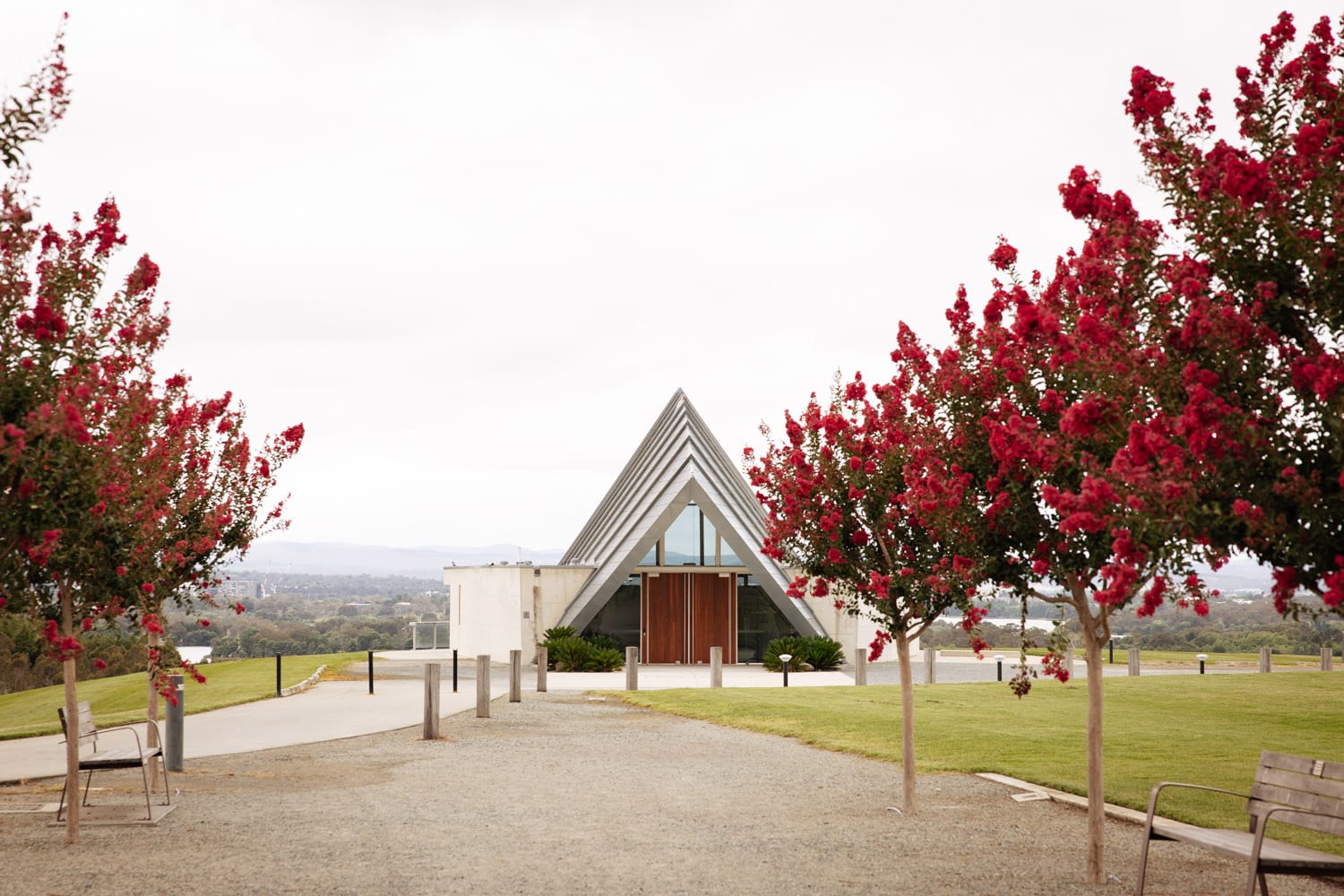
In 2003, bushfires ripped through south-west Canberra, taking lives, destroying homes and damaging more than two-thirds of Canberra's pastures, plantations and nature parks, including wiping out a pine plantation on a rise above Lake Burley Griffin. On this charred site the National Arboretum was created – an ambitious living symbol of rebirth.
The arboretum is as grand in scale – imagine 44,000 rare, endangered and iconic trees planted across 250 hectares – as it is ambitious in design. There are 100 single-species tree forests – mass plantings of one type of tree, such as pin oaks, Wollemi pines or grass trees – broken up by secret gardens and a growing collection of individual trees. It's sort of like a giant zoo of trees that, viewed from the air, resembles a living patchwork quilt draped over the undulating landscape. It's staggeringly beautiful. And bold.
There are 20 kilometres of walking and bike trails through the forests. If you happen to have a horse, you can ride that through the forests, too. Next to the main building is a wonderful bonsai room (I swear the air in the room acts like a natural sedative), a much-loved children's acorn playground and a grassy, terraced slope perfect for picnics and flying kites.
I'm sure that if I lived here, I'd take up mountain biking and coast down the tree-flanked tracks every week. But even without a bike or a horse, the seven-kilometre explorer track through the trees in the southern forests was lovely.
Architect Aldo Giurgola, who co-designed Parliament House and oversaw its construction, described Canberra as "delightful" because it has been structured with trees. "No other city in the world has this sort of generosity of space," he said. It's certainly feeling generous to me, up here at the arboretum.
Forest Drive, off Tuggeranong Parkway, Molonglo Valley
You know those travellers who have a big map on their wall, studded with pins to mark all the places they've visited? Well, I don't have one of those, but I do often buy a handmade mug while on holiday. As such, my cup drawer acts as a pseudo scrapbook and my morning coffee becomes a mini trip down memory lane.
About 15 minutes' drive from Dairy Road Precinct (I'm really not joking) is the Canberra Potters and Watson Arts Centre, where about 40 ceramicists have pieces for sale. I bought one lovely cup but coveted many more.
Next door to the shop is an exhibition space with a thoughtful annual program, and out the back are studios for artists and ceramic classes.
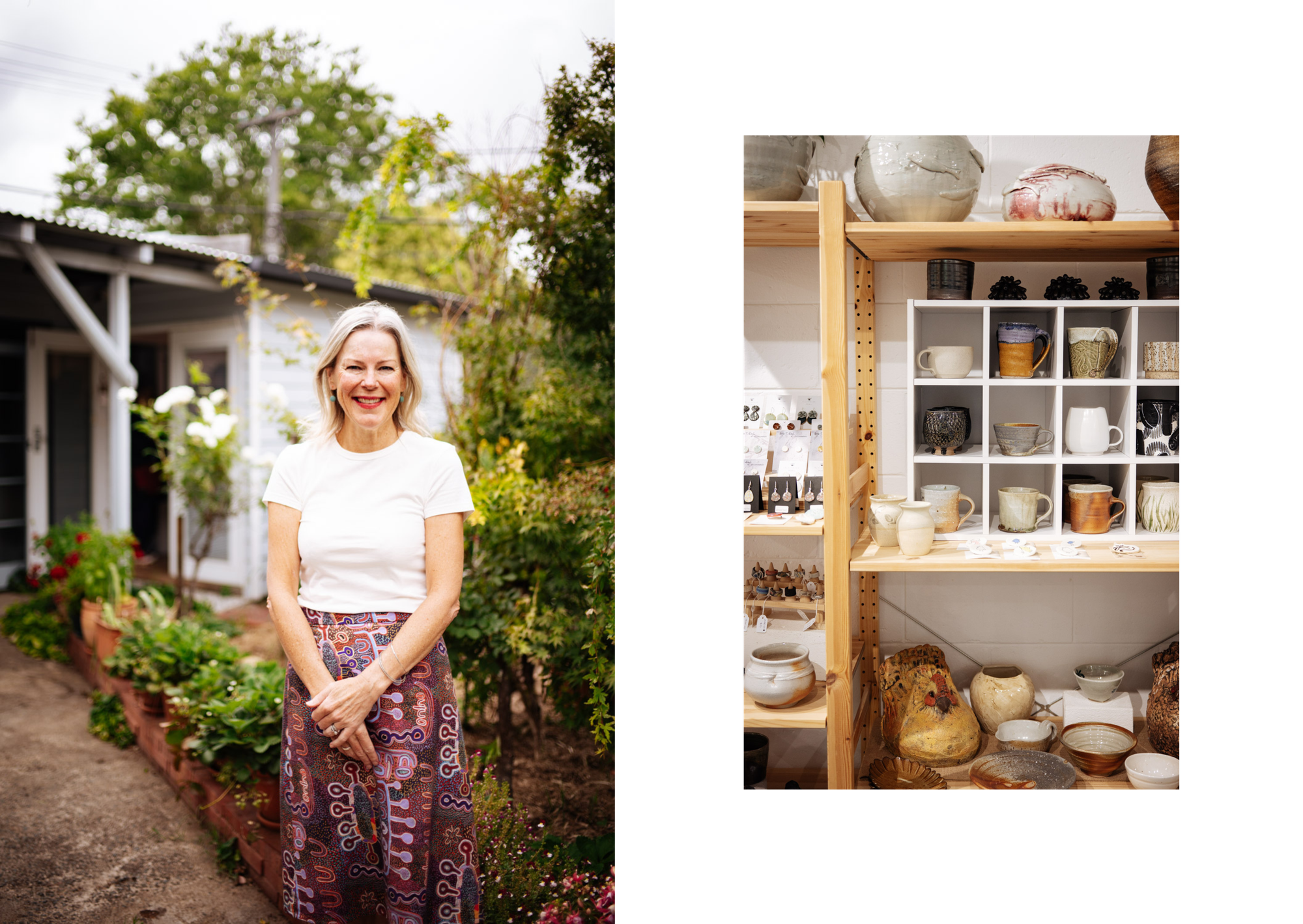
Around the corner, a three-minute drive away, is a private, tiny gallery called Gallery of Small Things. It's in a 1960s laundry outhouse, out the back of a house, down a driveway off a suburban street. When the sign's out and the driveway gates are open, so is the gallery.
I ask owner Anne Masters what made her want to start a gallery in her back garden. "Oh, it's just one of those things you do," she replies. "One day at a marketing course I had to really quickly write down what my goal in life was. I wrote down 'own a gallery'. That's where it started."
In 2017, Masters opened the tiny gallery space with the plan to curate exhibitions of small, affordable artwork from a range of local and interstate artists. Each year she holds two shows, and in between shows curations from a rotating stable of artists. She also works on her own ceramic practice in a room next to the gallery.
"It's part of our community," she says. "The street really loves it. It's really important to have your neighbourhood feeling connected." I thought about how rare it is to be invited into a tiny public space in the middle of a private suburban neighbourhood. I love it, too.
For a city of fewer than 500,000 residents (smaller than Newcastle), Canberra really punches above its weight in cultural offerings. The city's library is our national library. The city's gallery is our national gallery. And what is remarkable to me is that so much of this is free to the public. The arboretum, the National Portrait Gallery, the National Library, the National Gallery of Australia – the list goes on. All these cultural attractions and magnificent buildings are free to enter.
In the National Gallery forecourt sits an enormous, new, snake-like sculpture by Lindy Lee, Ouroboros, commissioned by the gallery to celebrate its 40th birthday. About 45,000 holes were handcut into the mirror-finish, stainless-steel cylindrical forms. By day, it reflects all that is around it: the water, the trees, the people. By night, it glows and almost sparkles. You can look at it, but you can also walk in it. Lee wanted to create a work about everybody. "Under the open sky everybody belongs, everybody has their place," she said.

Canberra was built on a dream to represent who we are as Australians – a bit like Lee's sculpture – to reflect and refract our collective identity. The city feels both national and local. Grand buildings sit alongside intimate wine bars, and ambitious dreams of the future grow in forests planted on burnt earth. At its most aspirational, Canberra is about who we are as a nation. But it's also about who we're becoming. And, after a very satisfying two-day holiday here, the future feels bright.
Made in partnership with VisitCanberra. Start planning your trip now.
Meet the National Arboretum's Senior Director of Operations Amalie Shawcross.
After almost ten years as a public servant in Canberra, Louis Couttoupes realised a career in government wasn't for him. He quit and went to Paris with his girlfriend and fell in love with the "bistronomy" scene in Paris's 11th arrondissement. Then he moved back to Canberra and got a job at Bar Rochford, working his way up from washing dishes to becoming head chef.